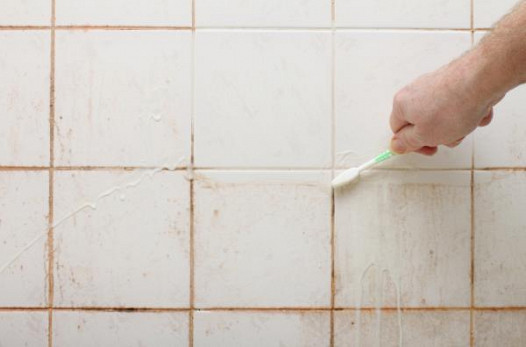Just about everyone has their private assumption on the subject of Looking for Signs of Water Damage in the Bathroom.

The restroom is incredibly susceptible for wet buildup and potential water damage because of the regular use of water in it. This post supplies straightforward examination strategies to aid identifying water damages threats.
The constant use water in the bathroom makes it extremely vulnerable for moist buildup and also possible water damages. By evaluating it regularly, you can reduce water related damages.
The following set of inspections is very easy to execute and also need to be done as soon as in every 3 months in order to maintain your shower room healthy as well as to avoid prospective water damages caused by the bathtub, the shower, pipe joints and plumbing, sinks, closets, and also the commode
Do not disregard doing these assessments as well as be extensive while performing them. Remember that these basic inspections can save you a great deal of money by offering early signs for water damages
Bathtub and Shower
The shower and also bath tub need special attention and also upkeep. Inspect the tiles and also replace if cracked. See to it that there is no missing grout in between the tiles. Evaluate as well as replace broken caulking at joints where the walls satisfy the floor or the bath tub. Clogged drains and pipelines issues will protect against the tub from drying and also might indicate significant issues below the bath tub. Talk to a professional quickly to avoid structural damages. Take note of stainings or soft areas around the bath tub walls as they might suggest an internal leakage.
Plumbing
Signs for water damages are difficult to identify because a lot of pipes are set up inside the wall surfaces.
Pay special focus to flooring as well as wall surfaces moisture as well as stains as they may show an invisible plumbing issue. Examine moisture degrees in adjacent rooms also.
Sinks and also Cabinets
Sinks and cupboards are revealed to moisture and humidity everyday and also are frequently forgotten. Inspect frequently under the sink and also on the countertop above it. Fix any kind of drip in the trap as it may recommend drainpipe problems. Take a look around the sink, sluggish draining pipelines may indicate a blocked drainpipe. Change sink seals if they are fractured or loose.
The Toilet
The bathroom is a susceptible water joint. Examine the water lines and look for leakages around the toilet seat, in the hose pipe, and also under the water tank. If you discover any kind of indicators of moisture on the flooring around the toilet, look for leakages in the toilet rim as well as container seals.
Realize that hanging toilet bowl antiperspirants raises the chances for blockages.
TIPS TO PREVENT WATER DAMAGE IN THE BATHROOM
The average household uses approximately 80-100 gallons of water per person per day. For a family of 4, that's almost 2,500 gallons of water a week! The largest portion of this consumption comes from bathroom use. Flushing the toilet uses the most water, followed by taking a shower or bath. With that much water running through the home, water damage in the bathroom is bound to happen. Knowing how to spot signs of a water leak is essential to preventing long-term damage. This guide provides you with tips to reduce the impact of water damage on your bathroom.
CAUSES OF BATHROOM WATER DAMAGE
- Pipe breaks are the most common cause of water damage we see in our daily jobs. The age of a pipe plays a large role in a pipe break as well as corrosion. Over time, the metal begins to break down, allowing water to escape. Frozen pipe breaks are also a concern in the winter months.
- Toilet overflows caused by paper products or children flushing inappropriate items.
- Degraded caulking around the toilet or bathtub can allow water seepage, sometimes behind the fixture, into the subfloor or walls.
- Condensation forms when the water in a pipe is cooler than the air temperature. Beads of water form on the exterior of the pipes, sometimes so much so that the water begins to drip and pool below.
- Sink or shower backups created by poor drainage.
HOW TO PREVENT WATER DAMAGE IN YOUR BATHROOM
- Inspect your toilet supply line for worn or frayed hoses and replace them as needed.
- Winterize your plumbing to prevent a frozen pipe break.
- Use vent fans to prevent condensation that can lead to mold growth.
- Routinely check and replace degraded caulking around your toilet or bathtub.
- Increase the temperature in your toilet tank and insulate your pipes during the warm summer months to keep condensation from forming.
- Use child safety locks on the toilets.
- Flush only toilet paper. "Flushable" wet wipes are actually not good for your plumbing system. Additionally, feminine hygiene products should not be flushed.
- Prevent water from escaping the tub or shower. Make sure shower curtains are in good condition. Inspect shower doors and replace the seal strip if necessary.
- Wipe up any water that accumulates on the floor and use bath mats. Water left to sit can cause damage to the tiles and flooring.
- Refrain from using bath products containing heavy oils to avoid a clogged drain.

I hope you liked our excerpt about Common Causes of Water Damage in a Bathroom. Thank you for spending some time to browse our posting. If you appreciated our article kindly do not forget to pass it around. Bless you for your time. Visit us again soon.
Start Now
Comments on “Avoiding Water Damage in the Bathroom”